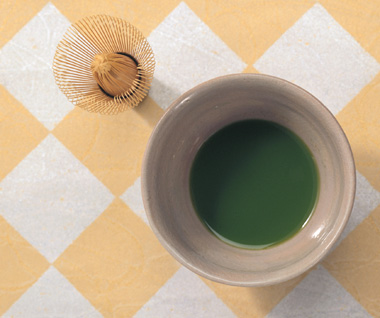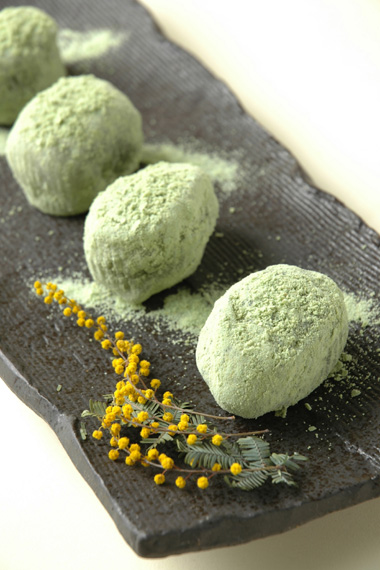
 |
Matcha (pronounce: "MA-cha") also spelt maccha (Japanese: 抹茶), is a fine, powdered green tea.
It is used in Japanese tea ceremony and for dying and flavouring foods such as mochi and soba noodles, green tea ice cream and different types of wagashi (Japanese confectionery).
Matcha costs more money than other kinds of tea. Its price depends on its quality (how good it is). It can be hard to find outside Japan, and also the special things that are used to make it and drink it.
|
| Powdered tea, stored and traded as tea bricks, seems to have been invented in China during the Song Dynasty (960-1279). Making and drinking powdered tea was formed into a ritual (special ceremony) by the Chan Buddhists. These Buddhists use to drink from the same bowl as a sacrament.Chan Buddhism (also known in Japanese as Zen), and powdered tea, were brought to Japan in 1191 by the monk Eisai. Powdered tea was slowly forgotten in China, but the 16th century tea master Sen no Rikyu made the rules of the Japanese tea ceremony. He said that matcha was the correct tea to use.
Production After harvesting, if the leaves are rolled out before drying as usual, the result will be gyokuro (jewel dew) tea. However, if the leaves are laid out flat to dry, they will crumble and become known as tencha (展茶). Tencha can then be de-veined, de-stemmed, and ground (pressed) with a stone until it becomes the fine, bright green, talc-like powder known as matcha. Only ground tencha can be called matcha: other powdered teas are known as konacha (粉茶, lit. "powdered tea").Nearly all the flavour of matcha comes from the amino acids. The best matcha has more sweetness and a deeper flavour than the normal grades of tea harvested later in the year. |
 |










